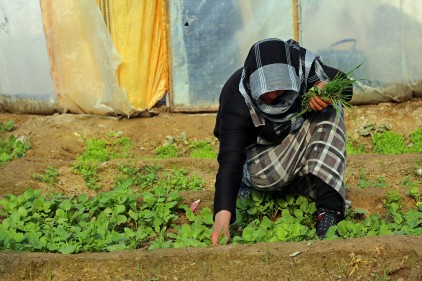
Overview
Agriculture is one of the most important sectors in the Afghan economy. While other sectors such as mining and services are emerging, at least for the medium term the agriculture sector will remain the key sector for employment and poverty alleviation. More than 80 per cent of the population and 90 per cent of the poor are engaged in agriculture for livelihoods. Nearly one third of the households earn main income from the agriculture.
Afghanistan has a strong comparative advantage in the production of specific tree crops, particularly fruits and nuts. These crops have strong potential for income generation, employment creation, and export earnings. Meanwhile, vegetable crops are also an important source of household income in many regions of the country, and are a crop of particular significance to women.
The livestock sector has been identified as a sector where investments in animal health and related improvements in on-farm productivity could reap substantial gains. The dispersed structure of the livestock industry in Afghanistan suggests that such benefits would be very broad based and accrue to populations in remote and undeserved areas.
Challenges
There have been substantial improvements in development outcomes since 2001, particularly in expanded access to water, sanitation, electricity, education, and health services, but Afghanistan continues to experience insecurity and political uncertainty. Its economy has been hard-hit by the outbreak of the new coronavirus disease due to negative impacts on consumption, exports, and remittances.
Government capacity is still weak, despite improvements. The combination of poverty, insecurity, and poor governance means that the government faces daunting challenges. To ensure that benefits of agriculture-led growth are maximized and widely shared, continued investment is required in human capital, regional connectivity, expanded infrastructure, and an improved business regulatory environment.
Approach
Implemented by the Ministry of Agriculture, Irrigation and Livestock, the National Horticulture and Livestock Project (NHLP) promotes the adoption of improved production practices and technologies by target farmers. The strategy to achieve this goal is based on the delivery of extension and investment support through strengthened systems. The project covers 291 districts across Afghanistan, and has reached over 580,000 farmers, about 40 percent of whom are women.
Adoption of improved production practices by target farmers is being promoted, with gradual rollout of farmer-centric agricultural services systems and investment support. Service delivery centered on farmers will promote increased participation of beneficiaries in defining the type of services required and in the delivery itself. NHLP also will promote improved ratio of overall costs reaching beneficiaries as direct investments. The aim is, thus, to promote sustainability, effectiveness, and efficiency in the horticultural and livestock sectors.
Results
- Orchards: Established 32,520 hectares (ha) of new fruit and pistachio orchards; rehabilitated over 32,000 ha of existing orchards.
- Kitchen gardening schemes: Established more than 143,000 schemes.
- Water harvesting: Constructed about 1,300 small water harvesting structures.
- Raisin production: Constructed over 2,000 raisin drying houses on a cost-sharing basis.
- Producers Marketing Organization: Set up 108 Producers Marketing Organizations with a membership of over 1,900 farmers.
- Livestock activities: Supported over 200,000 livestock farmers (over 60 percent women), clustering them into producers’ groups. About 17 million animals have been vaccinated against brucellosis diseases.
ARTF contribution
NHLP is supported by a $190 million grant from the ARTF. It has approved funding from December 22, 2012, to December 31, 2020.
Moving Forward
NHLP will continue to focus on the horticulture and livestock subsectors exclusively, because both are deemed instrumental to driving growth in the larger agriculture sector. In the case of horticulture, Afghanistan has a strong comparative advantage in the production of specific tree crops (i.e. grapes, almonds, apple, pistachio, apricots, pomegranates and melon) which also have strong potential for on-farm income generation, employment creation, and export earnings. The livestock sector is being identified as an area in which investments in animal health and related improvements in on-farm productivity can lead to substantial gains.